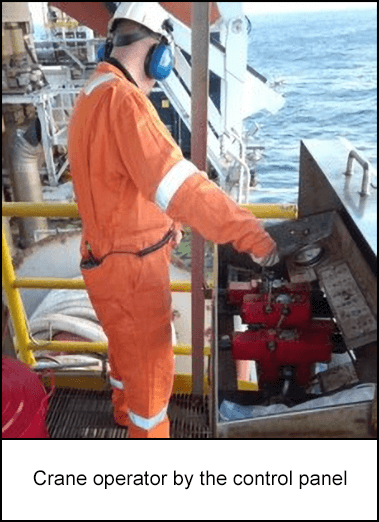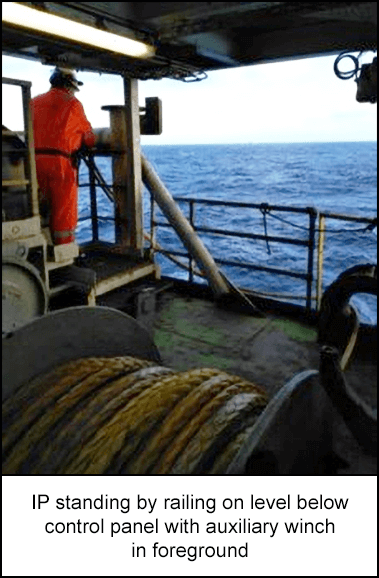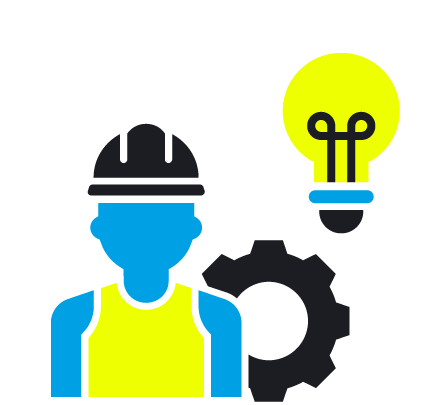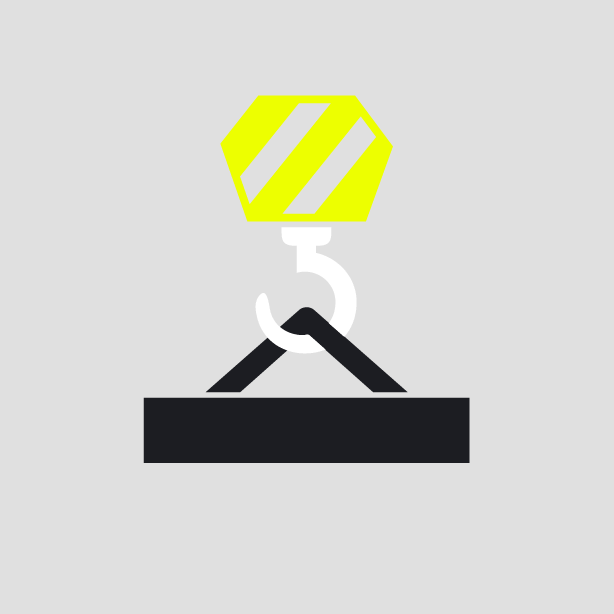-
What happened?
While connecting to a shuttle tanker, the crane operator stood by the control panel to operate the mooring winch.
Below, there was an auxiliary winch with a rope hanging over the railing.
Accidentally, the crane operator activated the lever for the auxiliary winch, causing the rope to move.
Mistakenly thinking the rope was slipping over the railing, an individual at a lower level reached out and grabbed it.
Simultaneously, the crane operator continued pulling on the auxiliary winch lever, leading to the person's hand being pulled in and squeezed between the railing and the structure.

-
Why did it happen?
The design of the workplace made it difficult for the crane operator to monitor the control panel while operating the winch.
The risk of unintentional winch operation was not identified in the relevant documentation, and the individual's role in the operation was not adequately described in the procedure.
The production technician involved lacked some of the necessary training and was unaware that the auxiliary winch could be operated from the control panel.

-
What did they learn?
Ensure closer monitoring of outstanding competence requirements.
Update procedures and job safety analysis (SJA) to address the risk of unintentional winch operation.
Disconnect redundant levers to minimise accidental activation.
Ensure that the workplace design enhances safety during operations. Make improvements if needed.

-
Ask yourself or your crew
How can something like this happen here (e.g. on our site)?
What safety measures (i.e. procedures, controls/barriers) do we have in place to mitigate the risk?
How do we know the risk controls/barriers are working?
What improvements or changes should we make to the procedures, controls/barriers or the way we work?

Add to homescreen
Content name
Select existing category:
Content name
New collection
Edit collection
What happened?
While connecting to a shuttle tanker, the crane operator stood by the control panel to operate the mooring winch.
Below, there was an auxiliary winch with a rope hanging over the railing.
Accidentally, the crane operator activated the lever for the auxiliary winch, causing the rope to move.
Mistakenly thinking the rope was slipping over the railing, an individual at a lower level reached out and grabbed it.
Simultaneously, the crane operator continued pulling on the auxiliary winch lever, leading to the person's hand being pulled in and squeezed between the railing and the structure.

Why did it happen?
The design of the workplace made it difficult for the crane operator to monitor the control panel while operating the winch.
The risk of unintentional winch operation was not identified in the relevant documentation, and the individual's role in the operation was not adequately described in the procedure.
The production technician involved lacked some of the necessary training and was unaware that the auxiliary winch could be operated from the control panel.

What did they learn?
Ensure closer monitoring of outstanding competence requirements.
Update procedures and job safety analysis (SJA) to address the risk of unintentional winch operation.
Disconnect redundant levers to minimise accidental activation.
Ensure that the workplace design enhances safety during operations. Make improvements if needed.
Ask yourself or your crew
How can something like this happen here (e.g. on our site)?
What safety measures (i.e. procedures, controls/barriers) do we have in place to mitigate the risk?
How do we know the risk controls/barriers are working?
What improvements or changes should we make to the procedures, controls/barriers or the way we work?
During a connection to a shuttle tanker, a crane operator accidentally activated the lever for an auxiliary winch. At the same time, an individual at a lower level saw the rope connected to the auxiliary winch move, mistaking it for slipping over the railing. As the crane operator pulled further on the lever, the individual's hand got caught and squeezed between the railing and the structure.











